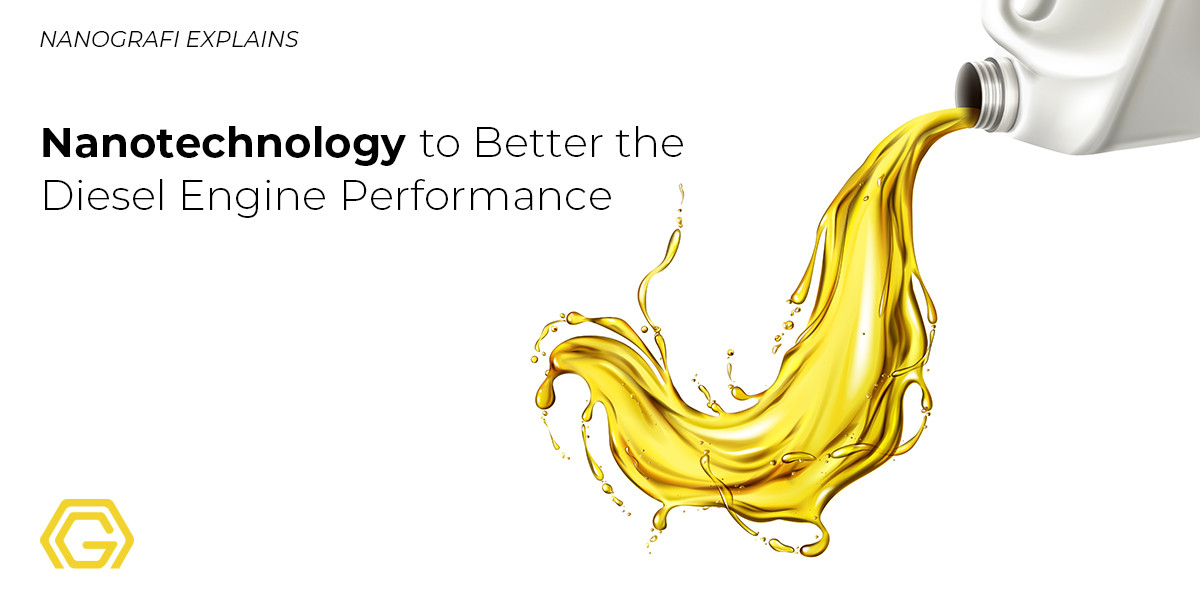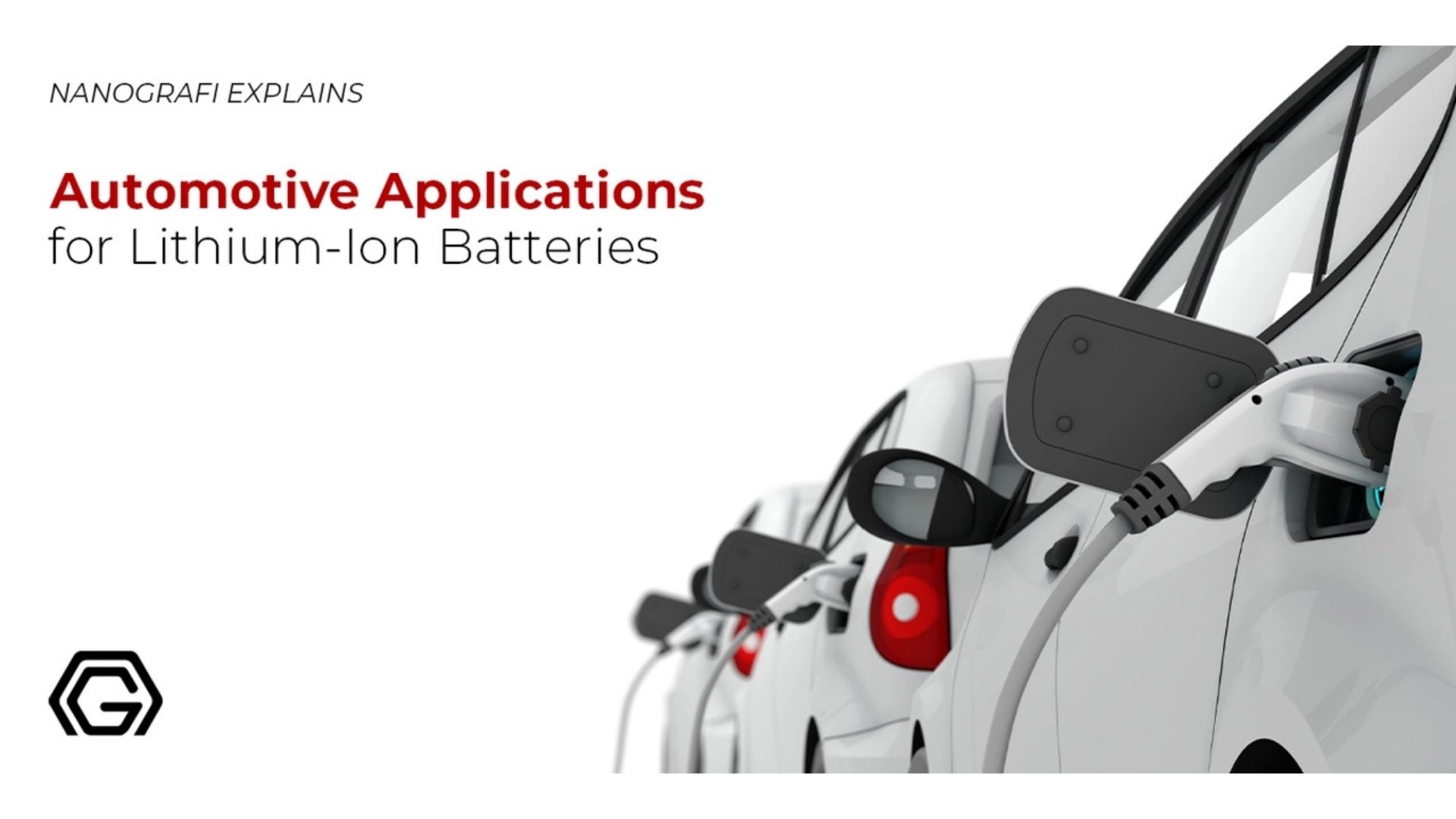Nanotechnology to Better the Diesel Engine Performance
Recently, characteristics and performance of diesel engines have been improved using nanostructured materials, water and diesel emulsified fuels.
Technically, the reduction in the gas exhaust emission in engines involves two different methods. According to first method, exhaust gas emission is reduced via an exhaust gas treatment device such as a diesel particulate filter and a catalytic converter but the problem is their application can greatly affect the performance of diesel engines.
Introduction
In the second method, the emissions are reduced or engines are improved through employing a series of fuel additives. Basically, the main hazardous materials and pollutants of diesel engines are particulate matter and oxides of nitrogen family and the problem is it is a challenging job to control them simultaneously.
Impact of Nanomaterials on Diesel Engine Efficiency and Biodiesel Fuels
It has been reported in the literature that the best technique to improve the performance of diesel engines and control the emissions is the application of nanostructured materials and additives as well as water emulsified fuels. In addition to nanomaterials, biodiesel fuels have emerged as alternatives to be added to the diesel fuel in combination with nanoparticle additives. Evaluation of the effect of various nanomaterials on properties diesel and biodiesel fields involves investigating the performance in the presence or absence of water content and nanoparticles. Numerous studies have reported improvements in engine performance and reduction in hazardous materials characteristics including nanostructured materials in diesel and biodiesel 1.
Diesel Fuels and Current Issues
The main component of the diesel fuel is hydrocarbons (C8–28) with the boiling temperature is of 132 to 370°C. As it was mentioned earlier, diesel engines emissions contain numerous gases and aerosols including oxides of nitrogen, hydrocarbons, carbon monoxide and particulate matter. The emission from the internal combustion of engines that leads to acid rain contains sulfur and oxides of nitrogen. Once the diesel fuels are mixed with oxygenated fuels, the physicochemical properties of the files such as density, flashpoint, cetane number and viscosity might face alterations. The flash point, density and cetane number of the oxygenated fuels are low. Thereafter, it is necessary to employ tertiary additives in order to improve the cetane number in order to get over the problem. Among all, 2-methoxy ethyl ether, nitro ethane, octyl nitrate, methyl ester and nitro methane are the most predominant and widely used cetane number improvers capable of preventing two-phase blend formation. On the other hand, tertiary additives are capable of enhancing density, flashpoint and viscosity. Furthermore, the effect of these cetane number improver has been investigated incomplete and it has been concluded that these additives of nitrogen are capable of promoting the cetane number considerably 1.
Nanostructured Additives for Diesel Fuels
Metallic materials with nanoscale properties include magnesium, aluminum, zirconium, titanium, boron, nickel and metal oxides. Nanoporous silicon wafers and Nanostructured silicon powders have been investigated for their applications for energy purposes. Quantities of alumina nanofluid in aqueous solution and jatropha biodiesel emulsion fuel have been used as the base in the diesel engine. Following this, the constant speed of 1500 tpm is applied to mix a mass fraction of 25 to 100 ppm, with nano alumina blended water diesel. Nanoparticles of titanium oxide in diesel fuel combined with palm oil in another study. Zinc oxide nanoparticles have also been employed in blends of diesel fuel. Other nanoparticles that have been used to improve the quality of diesel fuel are cerium oxide, cobalt oxide, Al2O3, FeCl3, CuCl2, CoCl2, CuO and CuSO4 2345.
To learn more about role of nanotechnology in automotive industry,
you can read our blog post here.
Nanoparticles Impact on Fuel Properties
Kinematic viscosity of nano emulsion fuels besides density have shown to increase not remarkably probably because of the presence of water in the fuel. It is demonstrated in a study that no significant impact of nanomaterials is observed on the flashpoint, viscosity and density after the addition of zinc nanoparticles in diesel–pomoplion stearin wax biodiesel blends. The addition of titanium oxide nanoparticles with blends of palm oil biodiesel results in a decrease in the viscosity and an increase in the dose of the nanoparticles. Nevertheless, the more the concentration of the nanoparticles increases the bigger the calorific value of the fuel becomes. The application of cerium oxide nanoparticles in jatropha biodiesel slightly increases, the viscosity and the reduction in flashpoint and calorific value 1.
Effect of Nanomaterials on Exhaust Emission Characteristics
In the case of nitrogen oxides in exhausted mission, numerous nanostructured metal additives including nano metal oxide of manganese and copper have been employed to the diesel fuel in order to process better fuel combustion as well as reducing the rate of exhaust gases. Surprisingly, the emission of nitrogen oxides reduces considerably when nanoscale cerium and platinum additives are included in the diesel fuel. However, nitrogen oxide emissions that are detected at higher amounts with metallic-based additives mostly because of the effect of catalyst of metallic additives during the combustion process. The blends of biodiesel with manganese additives compared with nickel additives show to be relatively high. Accordingly, the excessive rate of nitrogen oxide might be because of the manganese additives which possesses more catalyst effect on the combustion leading to an increase in the maximum temperature 1.
That studies show that the presence of aluminium ethanol and decane leads to a change in the evaporation behavior of the base fluids and a reduction in the emission of nitrogen oxides. Technically, nanostructured cerium oxide are thermally stable oxidation catalyst with the ability to improve hydrocarbon fuel oxidation. It has been shown in a reports that the use of nano aluminum in water diesel has led to an increase in the emission of nitrogen oxides. On the other hand, carbon nanotubes in water and emulsion fluids exhibits a considerable reduction in nitrogen oxides emission. The jatropha methyl ester containing carbon nanotubes choose lower rates of nitrogen oxide because of enhancing the combustion reaction in the air fuel mixture.
According to reports majority of hydrocarbon emission is considerably reduced through the addition of nanomaterials to the diesel fuel. It has been observed that the exhaust gas of engines increases when blends with nanosilicon and nanoaluminium are applied in water–diesel emulsion. Furthermore, the presence of carbon nanotubes in jatropha biodiesel leads to a secondary atomization in reducing the hydrocarbon emission. Based on the reports, the smaller quantities of monoxide is observed when higher concentrations of fuels based on manganese are employed which is mostly due to the diesel fuels with additives based on metals. The application of copper oxide, manganese oxide, magnesium oxide and calcium oxide additives shows a considerable decrease the level of carbon monoxide in the diesel fuel 1.
Conclusion
Based on the analysis of reporting the literature it is concluded the application of nanomaterials in the diel fuel could greatly increase surface area to volume ratio catalytic activity in metal oxides and metals causing improvements in the quality of the diesel fuel as well as reducing the amount of hazardous gases after the exhaust combustion. Moreover, nanofluids improve the combustion mainly because of a phenomenon called micro explosion. Totally, the presence of nanoparticles in fuels improves the calorific value and cetane number of biodiesel and diesel fuels. It should be noted that the properties like density, flashpoint and viscosity of the fuels decrease slightly.
To discover the latest news from nanotechnology, you can visit Blografi.
References
Annamalai, M. et al. An assessment on performance, combustion and emission behavior of a diesel engine powered by ceria nanoparticle blended emulsified biofuel. Energy Convers. Manag.123, 372–380 (2016).
Automotive Applications for Lithium-Ion Batteries - Nanografi Nano Technology. (n.d.). Retrieved April 29, 2024, from https://nanografi.com/blog/automotive-applications-for-lithiumion-batteries/
Chaichan, M. T., Kadhum, A. A. H. & Al-Amiery, A. A. Novel technique for enhancement of diesel fuel: Impact of aqueous alumina nano-fluid on engine’s performance and emissions. Case Stud. Therm. Eng.10, 611–620 (2017).
Khond, V. W. & Kriplani, V. M. Effect of nanofluid additives on performances and emissions of emulsified diesel and biodiesel fueled stationary CI engine: A comprehensive review. Renew. Sustain. Energy Rev.59, 1338–1348 (2016).
Kumar Patel, H. & Kumar, S. Experimental analysis on performance of diesel engine using mixture of diesel and bio-diesel as a working fuel with aluminum oxide nanoparticle additive. Therm. Sci. Eng. Prog.4, 252–258 (2017).
Metallic Nanoparticles: Top-Down and Bottom-up Approaches - Nanografi - Nanografi Nano Technology. (n.d.). Retrieved April 29, 2024, from https://nanografi.com/blog/metallic-nanoparticles-topdown-and-bottomup-approaches-nanografi/
Nano and Micro Materials for A Sustainable Green World: Nano Cellulose Example - Nanografi Nano Technology. (n.d.). Retrieved April 29, 2024, from https://nanografi.com/blog/nano-and-micro-materials-for-a-sustainable-green-world-nano-cellulose-example/
Norhafana, M. et al. A review of the performance and emissions of nano additives in diesel fuelled compression ignition-engines. IOP Conf. Ser. Mater. Sci. Eng.469, (2019).
Synthesis and Application Areas of Cerium Oxide (CeO2) - Nanografi Nano Technology. (n.d.). Retrieved April 29, 2024, from https://nanografi.com/blog/synthesis-and-application-areas-of-cerium-oxide-ceo2/
Recent Posts
-
Advanced Materials for Unmanned Aerial Vehicle (UAV) Protection Against Laser
Consider a UAV on a critical mission, rendered inoperative by a sudden laser attack. With the increa …26th Jul 2024 -
Simulation and Modeling of Material Properties
Our world is composed of a dazzling array of materials, each with its own unique properties that dic …19th Jul 2024 -
Advanced Coatings for Superior Corrosion and Wear Resistance
Corrosion and wear pose significant challenges across various industries, leading to substantial eco …12th Jul 2024







